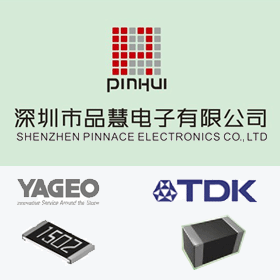Massive IoT and 5G: What’s Next for Large-Scale Cellular IoT
Massive IoT vs. Critical IoT

The Internet of Things (IoT) is leveraging the digital transformation power of improving LTE IoT and developing 5G networks. LTE IoT and 5G enable fast, cost-effective connections and high flexibility from well-established standards for options, such as:??
- Low rate and low power?
- High speed and low latency??
As the industry progresses, experts believe that most use cases will fall into one of two categories: critical IoT and massive IoT.?
Critical IoT applications are those that require low latency and ultrahigh reliability. Bandwidth-hungry and fault-sensitive use cases include anything requiring a constant data-rich connection to function, such as:??
- Telemedicine
- First responders
- Factory automation
As the name suggests, scale rather than speed drives massive IoT. IoT deployments can include anywhere from hundreds to billions of connected devices. These applications’ primary goal is to transmit and consume small data amounts from many devices efficiently.?
IoT verticals that might fall under the “massive” designation include:??
- Connected wearables
- Connected cars??
- Smart homes??
- Smart cities??
- Industrial IoT??
The transition to massive IoT, according to IndustryARC, could reach $121.4 billion by 2026, growing at a compound annual growth rate (CAGR) of 7.1% from 2021 to 2026. The accelerating demand for large-scale automation and machine intelligence drives this growth. As IoT networks become massive, so will the technical challenges of building and maintaining them with components that are:??
- Scalable??
- Secure??
- Low cost??
- Low power??
- Low latency
IoT Connectivity: From LPWANs to 5G
Massive IoT applications are a natural fit for cellular low-power wide-area networks (LPWANs). These cellular networks match the requirements of a massive IoT deployment. They can be built on?advanced LTE technologies?like LTE-M and narrowband IoT (NB-IoT).??
LTE-M and NB-IoT utilize narrower bandwidths optimized for low throughput applications. Low data flows, which 2G and 3G have carried for a long time, are witnessing massive migration to 4G and 5G as these older standards sunset worldwide. Massive IoT over cellular networks will only further develop as LTE-M and NB-IoT enhance with every new 5G release.?
As connected device numbers increase, LTE-Advanced (LTE-A), LTE-A Pro and 5G promise to meet massive IoT and mobile broadband demands. Cellular LPWANs built in concert with emerging 5G technology delivers options from high-speed and low-latency to energy-efficient solutions. They use cell technology that handles high connection density better.???
5G can operate at its highest bandwidths when utilizing millimeter Wave (mmWave) between 24 and 100 GHz. It will favor this spectrum for high-speed hot zones, leaving massive IoT to grow unencumbered in the frequency spectrum’s lower end.?
Organizations are directing 5G investments toward edge computing, advanced analytics and AI to scale up to IoT networks with the infrastructure to connect:??
- Autonomous vehicles??
- Smart buildings??
- Smart cities??
- Industrial internet (or Industry 4.0)??
Infrastructure investment in the billions will create revolutionary wireless technologies in the private and public sectors.?
The Challenges of Massive IoT
Several massive IoT challenges must be met on the way to full 5G. Advanced LTE networks must be equipped with enhanced capabilities to handle increasing data traffic as millions more mobile and IoT devices come online.??
Another significant challenge is meeting concerns over data security. As?David Roe writes at CMS Wire, “Security will take precedence over innovation if confidence in IoT is to grow and severe security issues are to be avoided.” The industry will see more aggressive attacks as bad actors test growing IoT networks’ vulnerabilities. Data security will become a competitive differentiator for customers looking to invest in IoT solutions.?
AI, machine learning and edge computing will play significant roles in massive IoT security design, as will stronger authentication methods. Companies investing in massive IoT must?firm up security protocols in advance of 5G cellular connectivity. Enhancing security will maintain consumer confidence and prevent unauthorized access.??
Massive IoT promises new developments in connectivity for all sorts of devices worldwide. However, it will also strain network reliability and security. As more use cases arise, so will more opportunities for invasion of privacy, physical harm and data theft.?
Editor’s Note: This blog was originally published on 21 September 2020 and has since been updated.?
